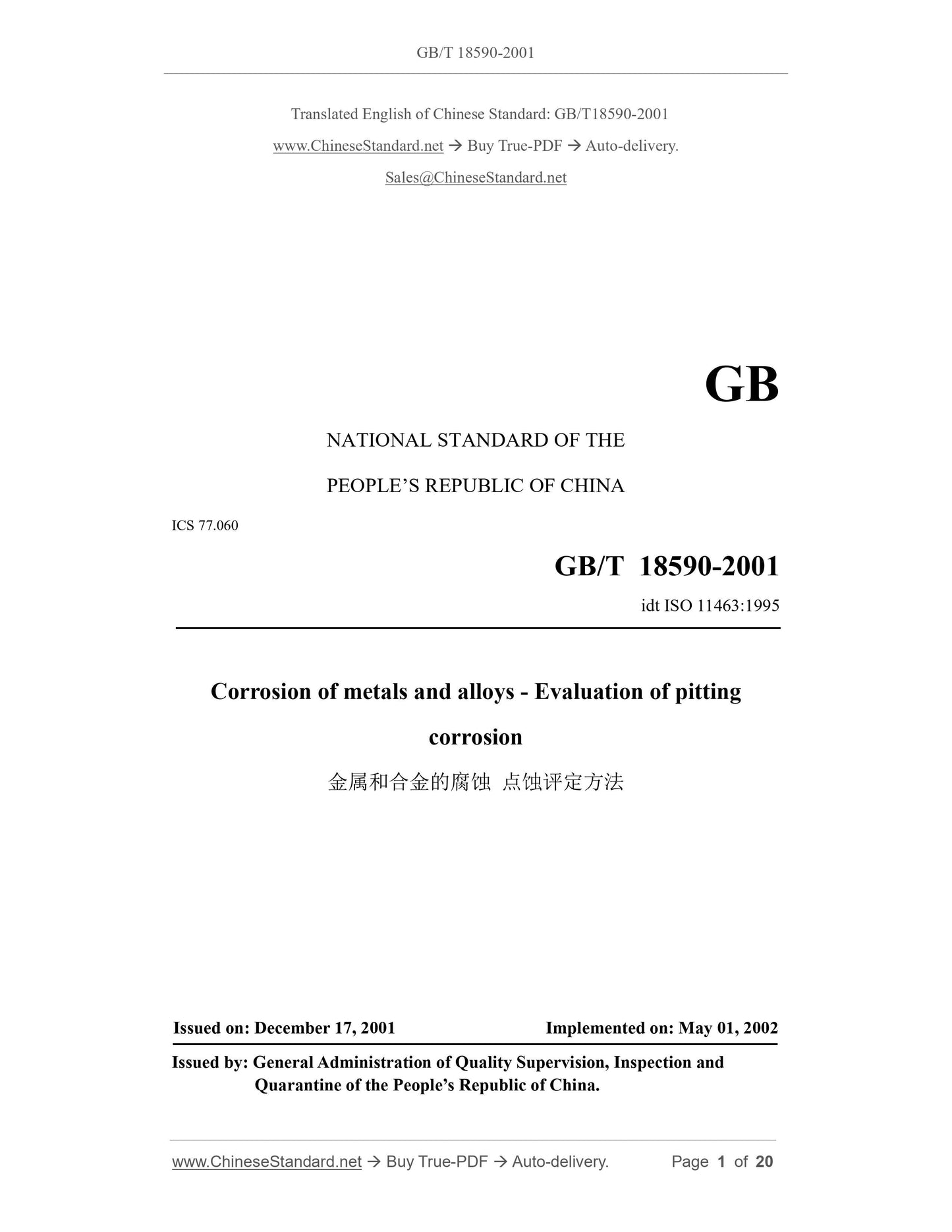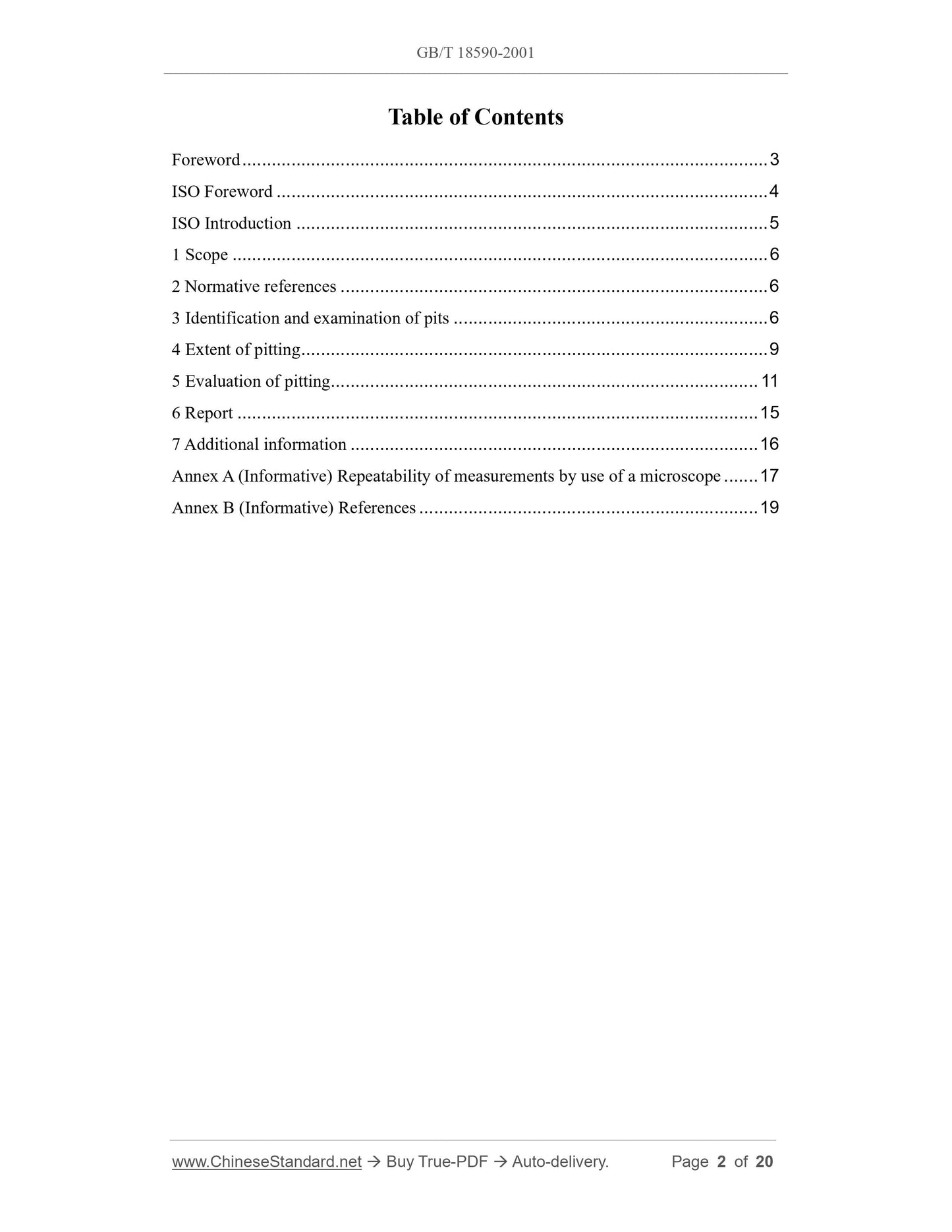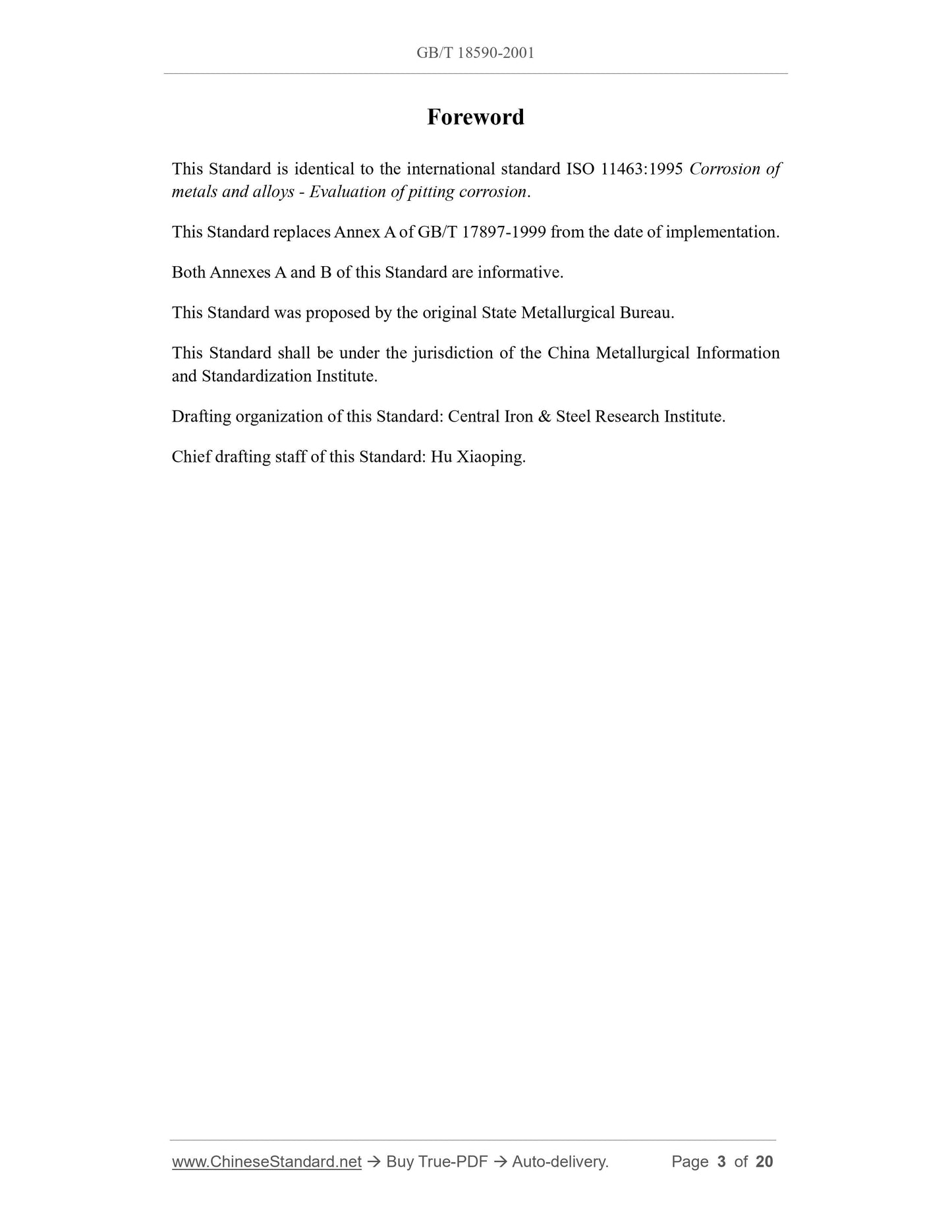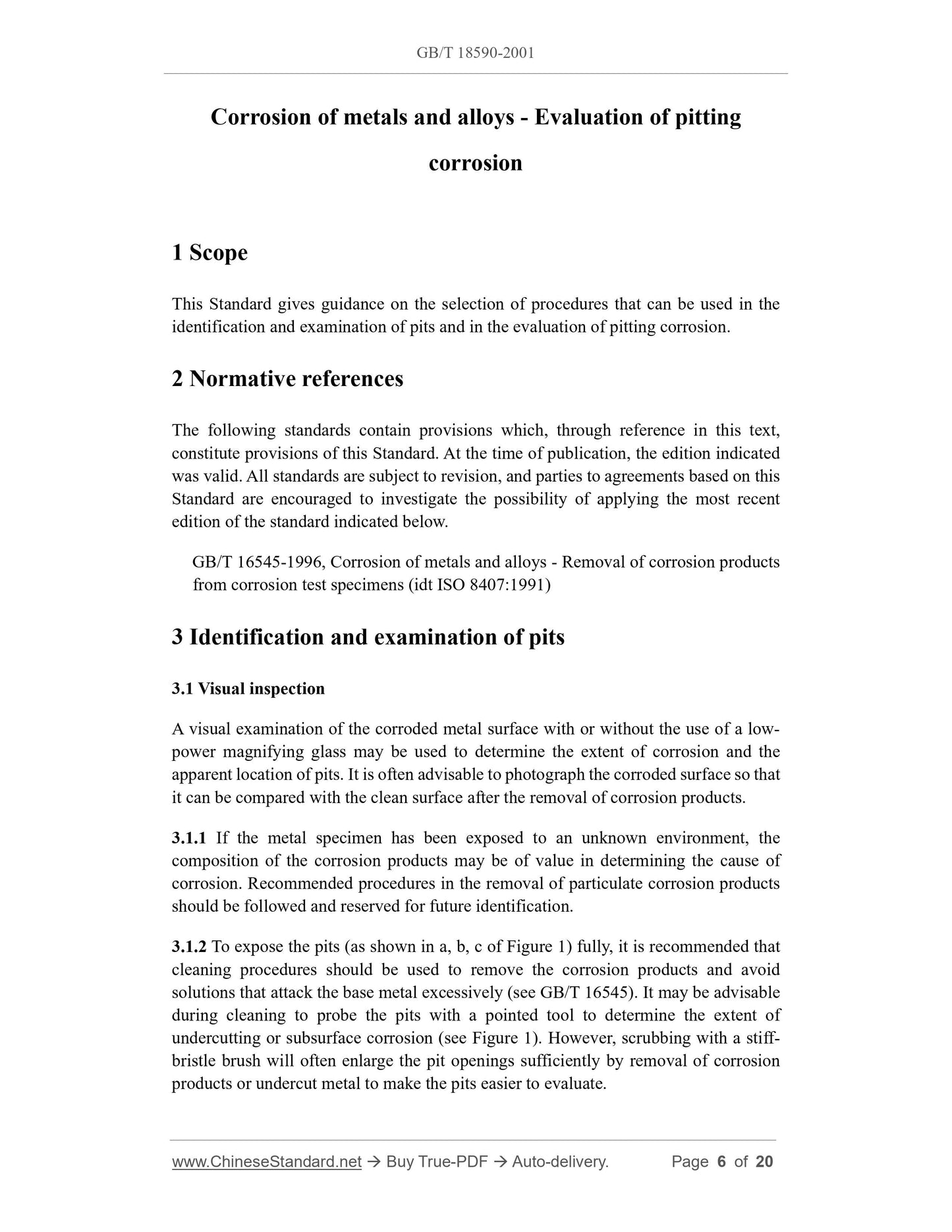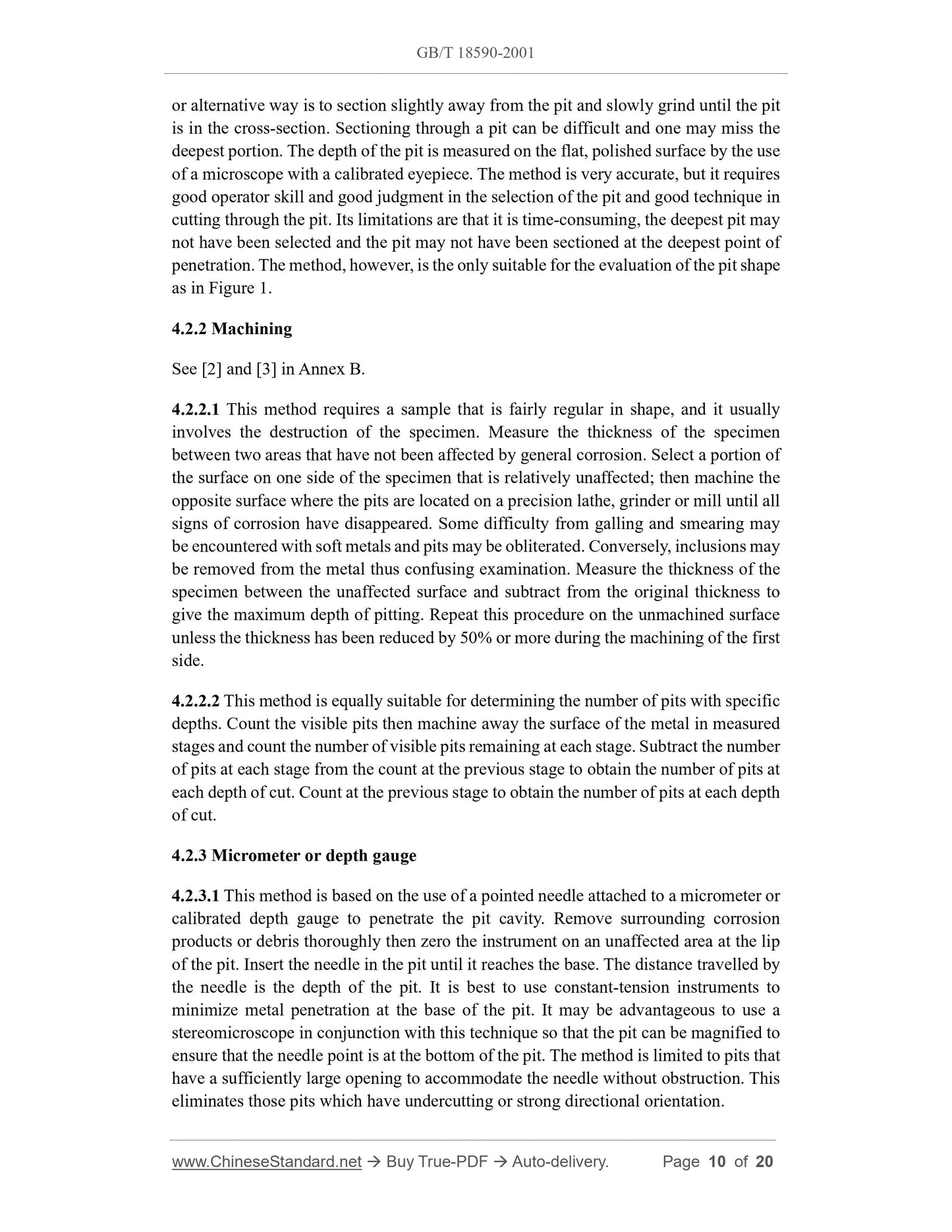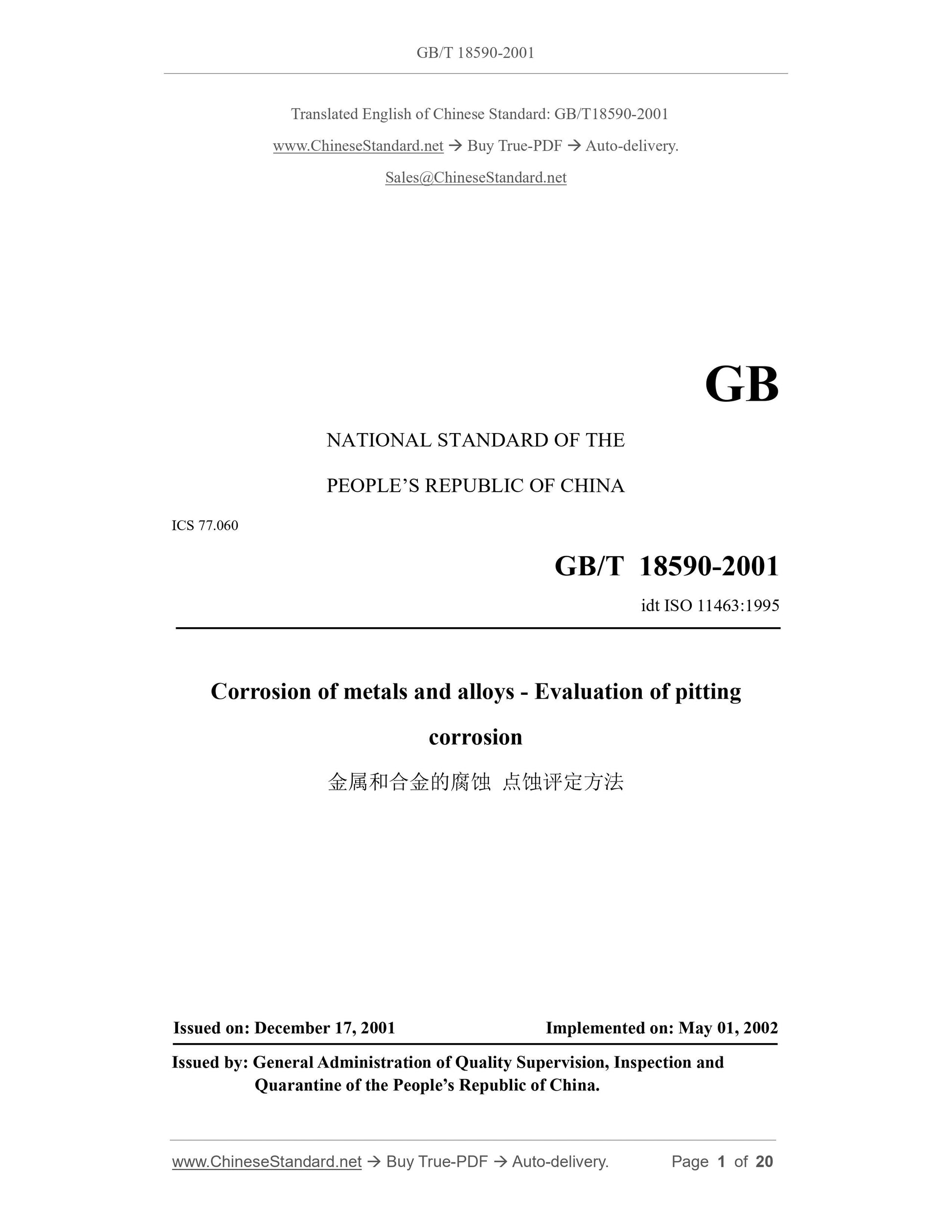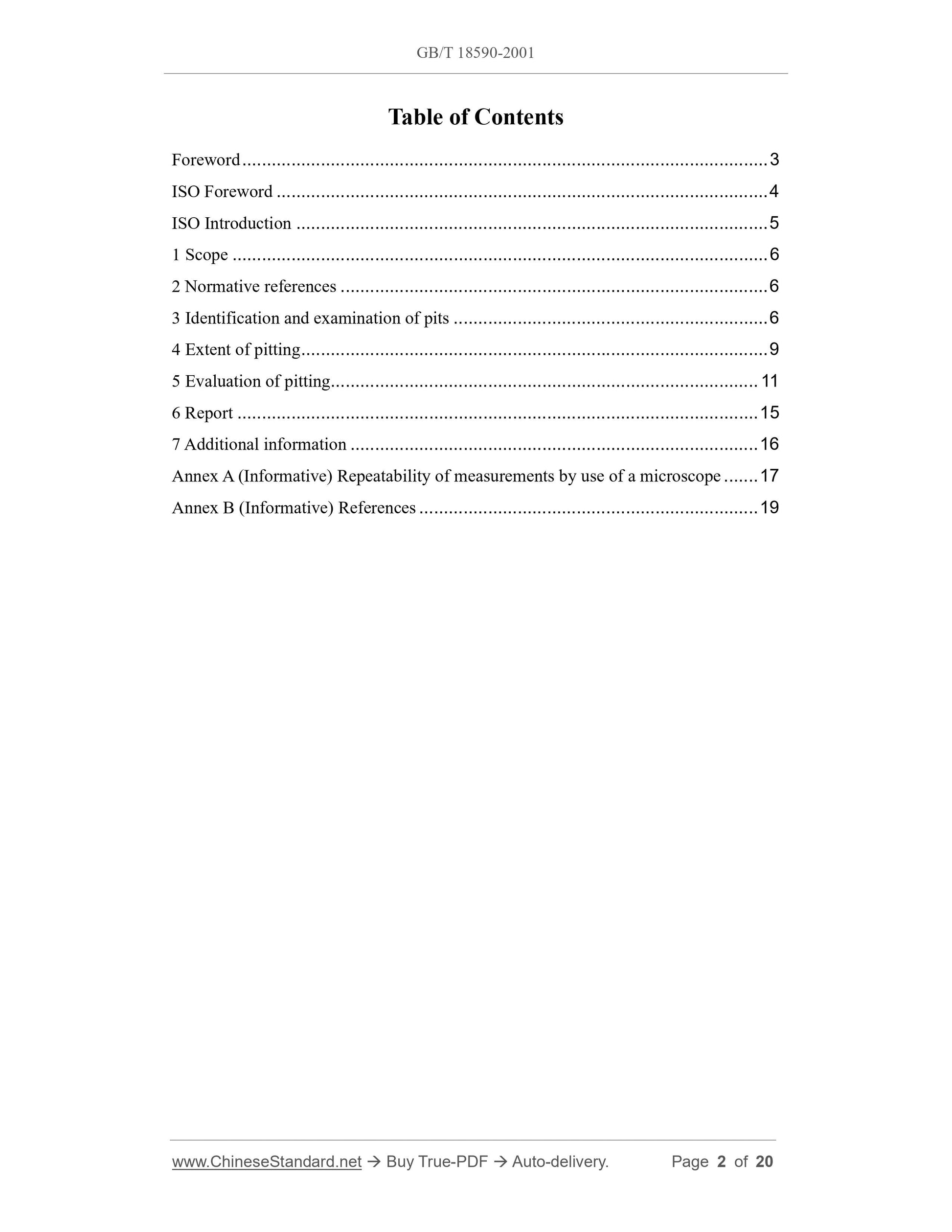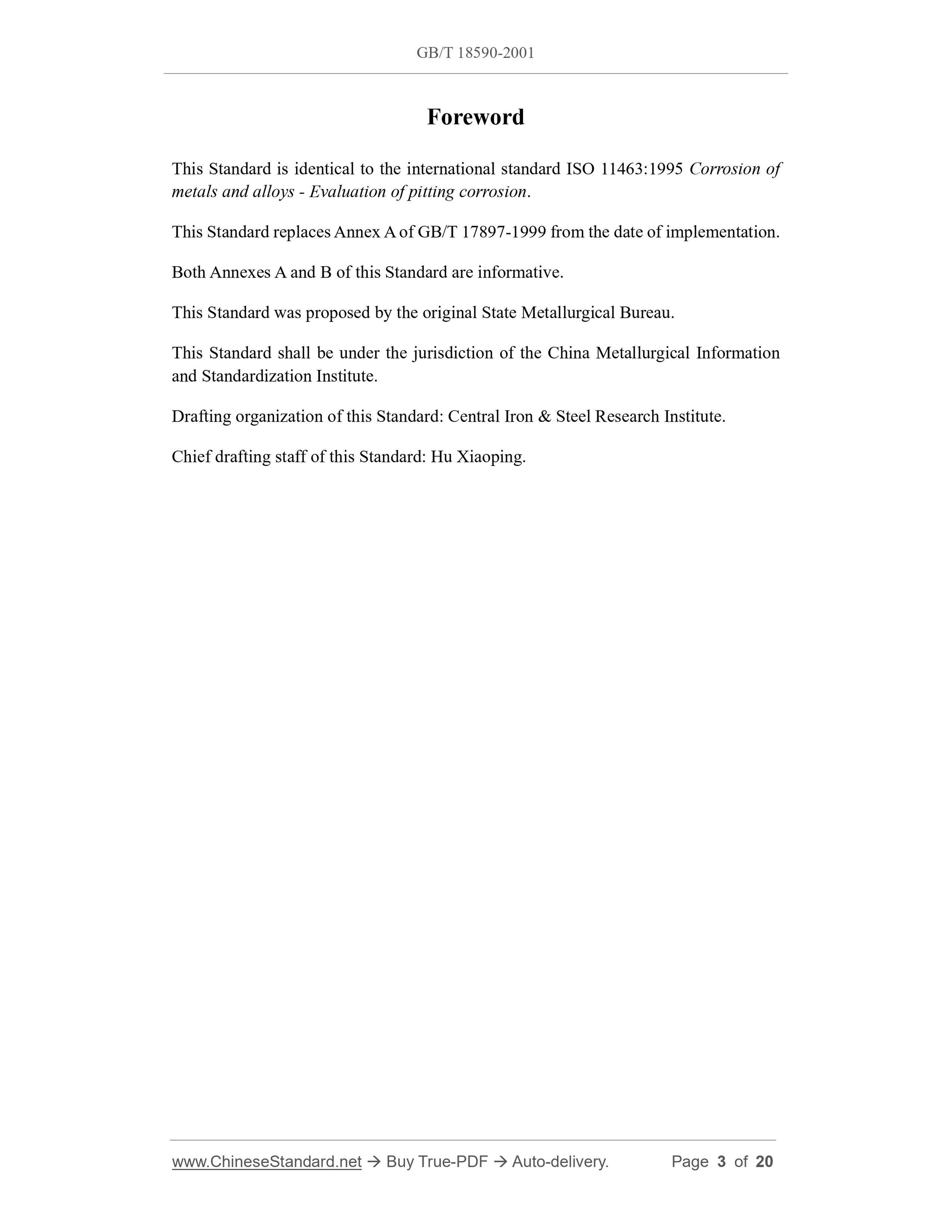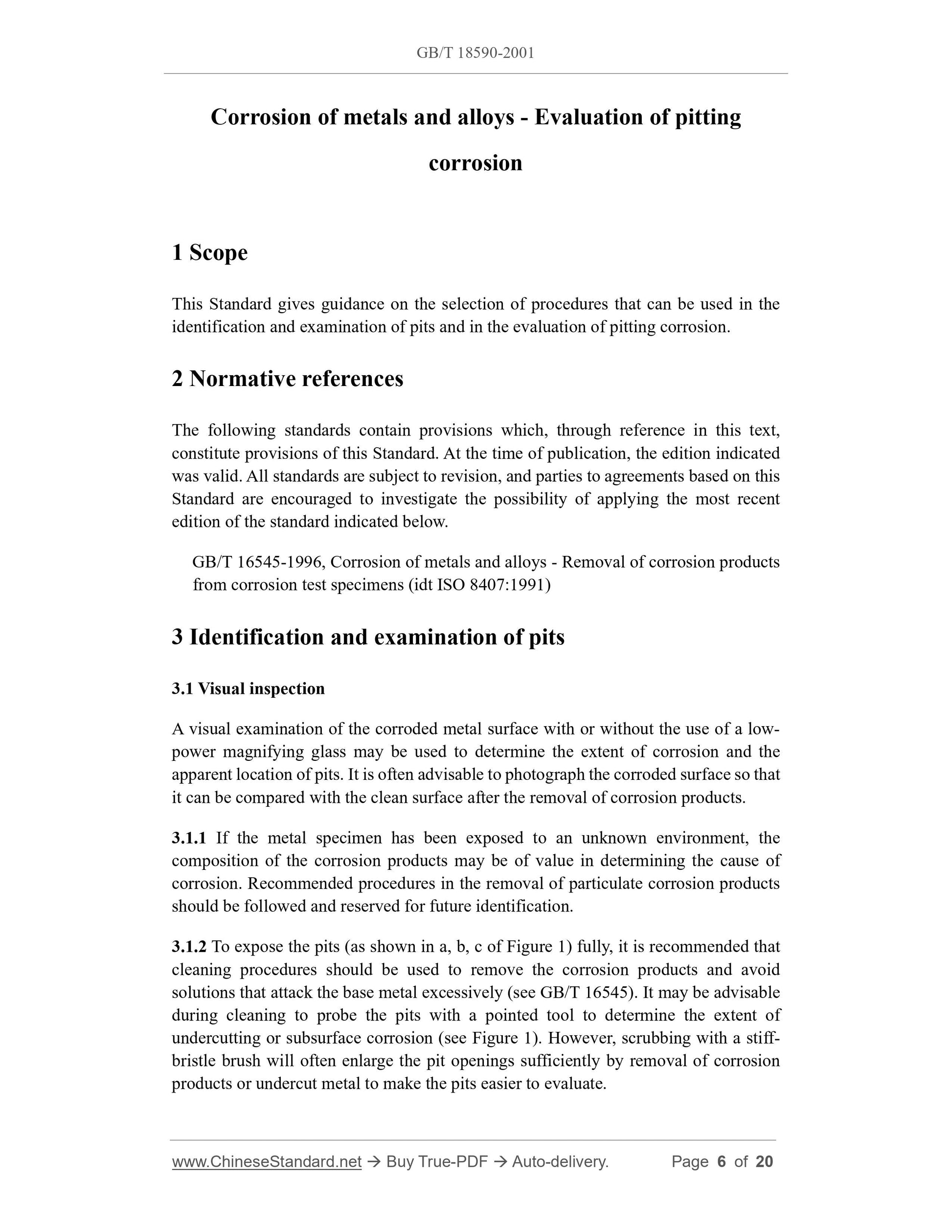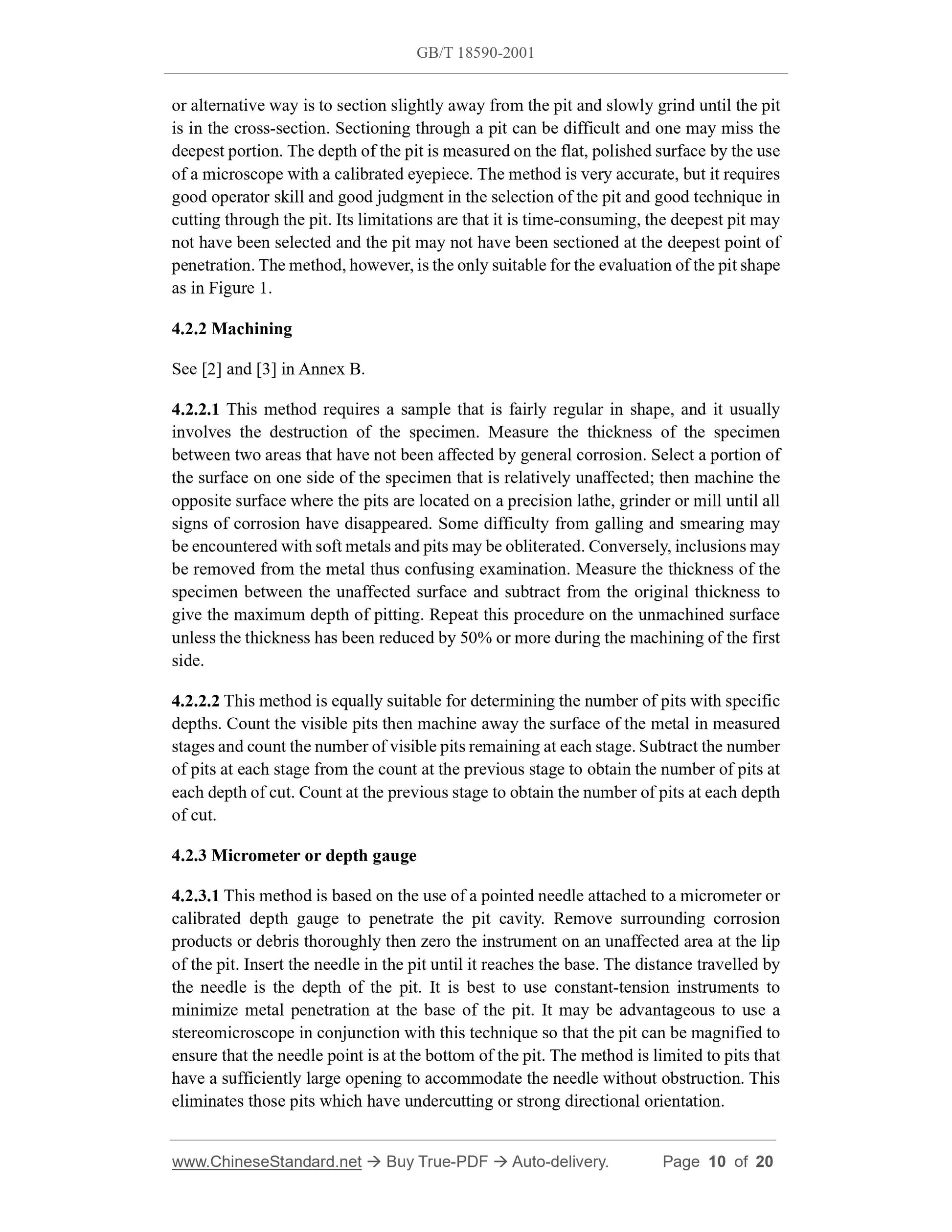1
/
of
5
www.ChineseStandard.us -- Field Test Asia Pte. Ltd.
GB/T 18590-2001 English PDF (GB/T18590-2001)
GB/T 18590-2001 English PDF (GB/T18590-2001)
Regular price
$105.00
Regular price
Sale price
$105.00
Unit price
/
per
Shipping calculated at checkout.
Couldn't load pickup availability
GB/T 18590-2001: Corrosion of metals and alloys -- Evaluation of pitting corrosion
Delivery: 9 seconds. Download (and Email) true-PDF + Invoice.Get Quotation: Click GB/T 18590-2001 (Self-service in 1-minute)
Newer / historical versions: GB/T 18590-2001
Preview True-PDF
Scope
This Standard gives guidance on the selection of procedures that can be used in theidentification and examination of pits and in the evaluation of pitting corrosion.
Basic Data
| Standard ID | GB/T 18590-2001 (GB/T18590-2001) |
| Description (Translated English) | Corrosion of metals and alloys. Evaluation of pitting corrosion |
| Sector / Industry | National Standard (Recommended) |
| Classification of Chinese Standard | H25 |
| Classification of International Standard | 77.060 |
| Word Count Estimation | 13,123 |
| Date of Issue | 2001-12-17 |
| Date of Implementation | 2002-05-01 |
| Older Standard (superseded by this standard) | GB/T 17897-1999 Partial |
| Quoted Standard | GB/T 16545-1996 |
| Adopted Standard | ISO 11463-1995, IDT |
| Issuing agency(ies) | General Administration of Quality Supervision, Inspection and Quarantine of the People Republic of China |
| Summary | This standard specifies for selecting the identification, screening and evaluation of pitting corrosion pit method guidelines. |
Share
